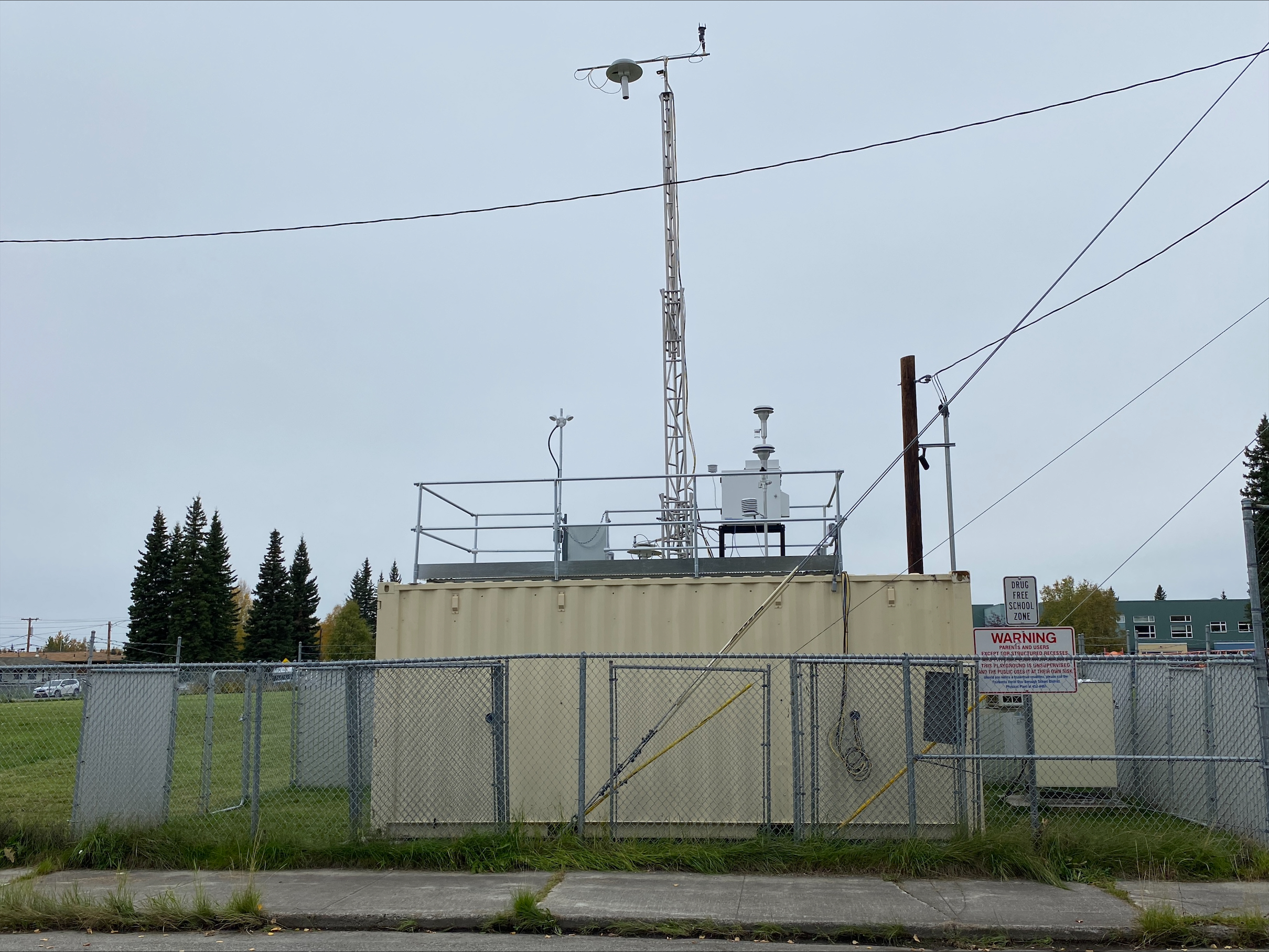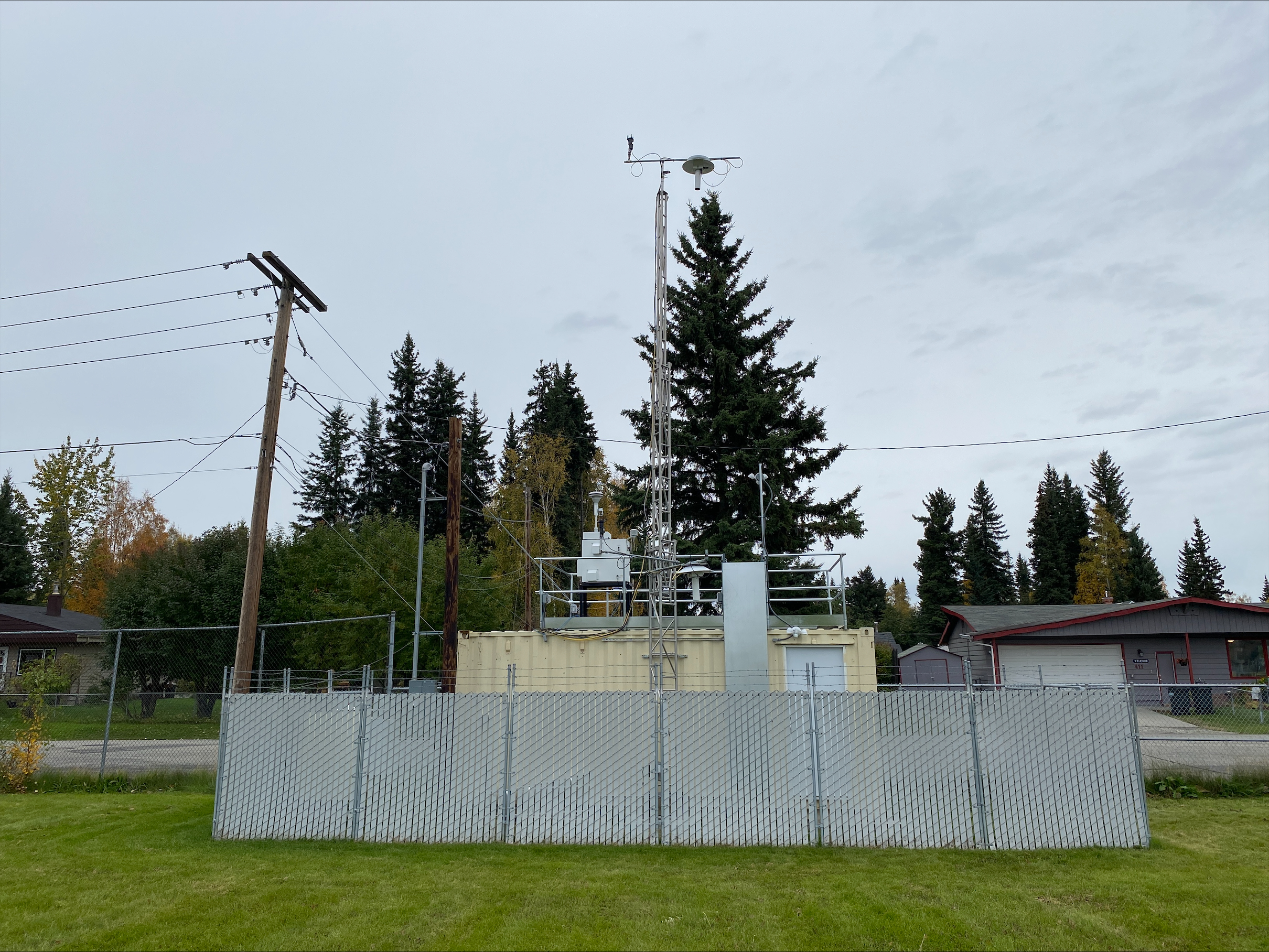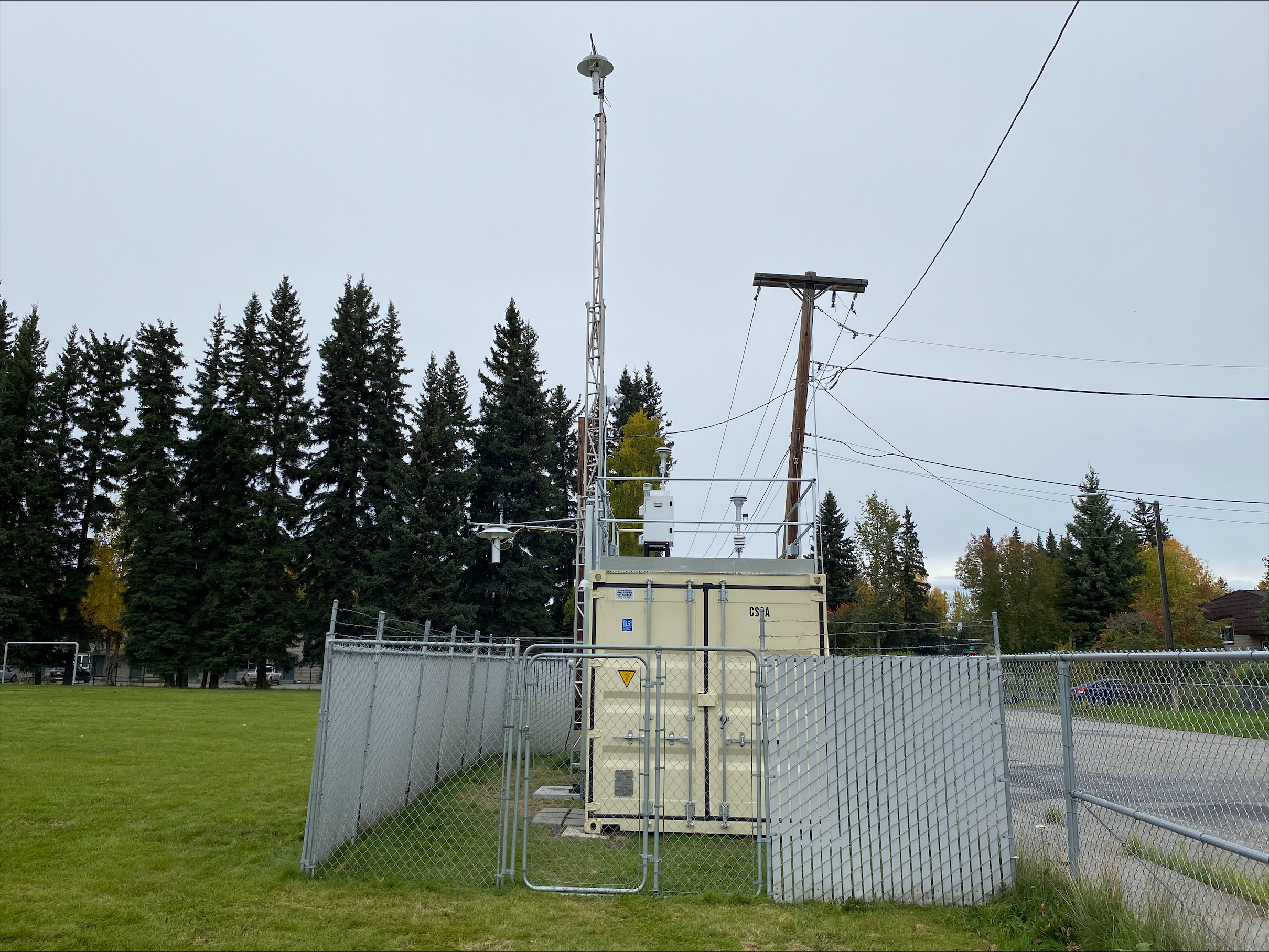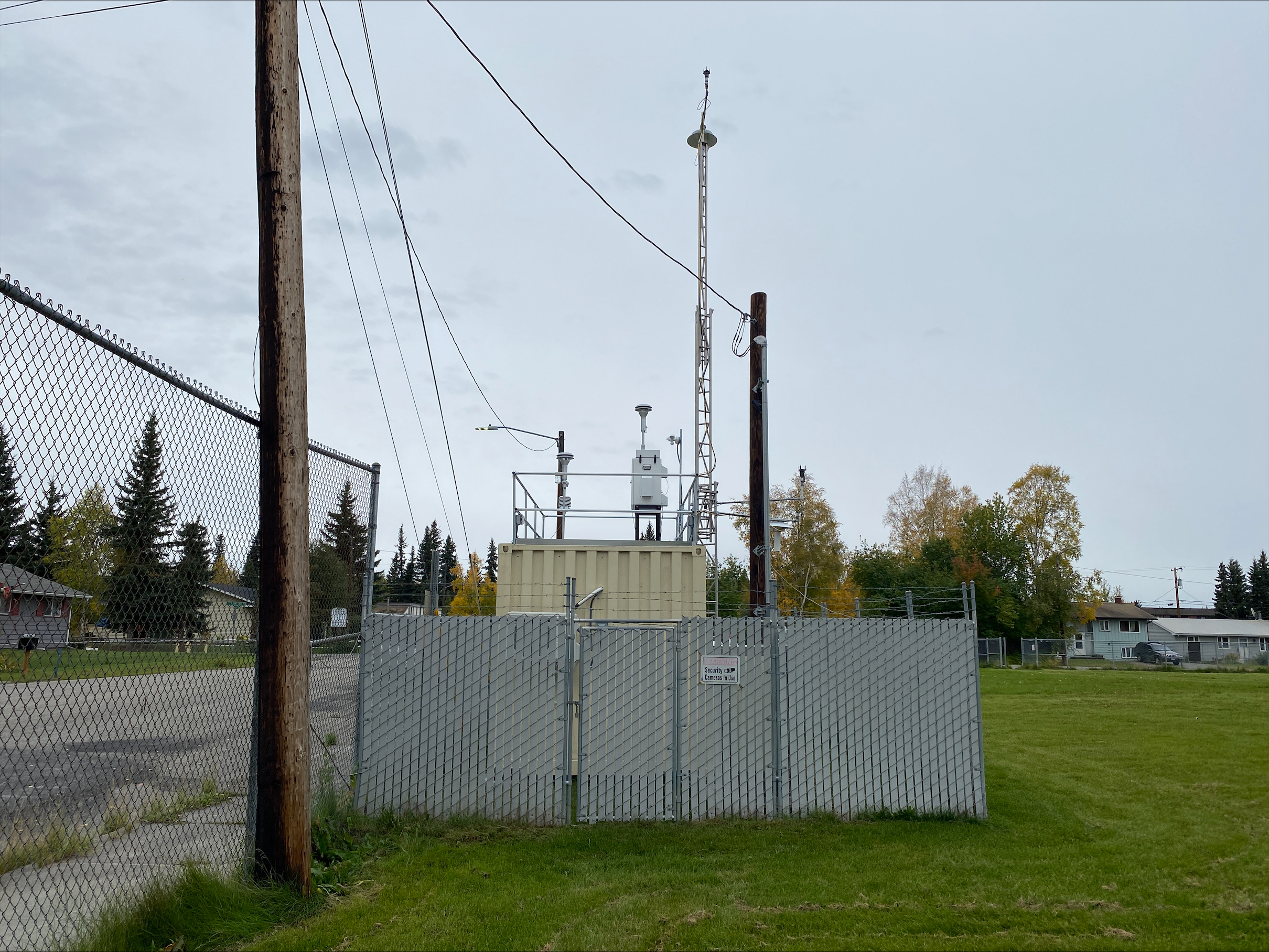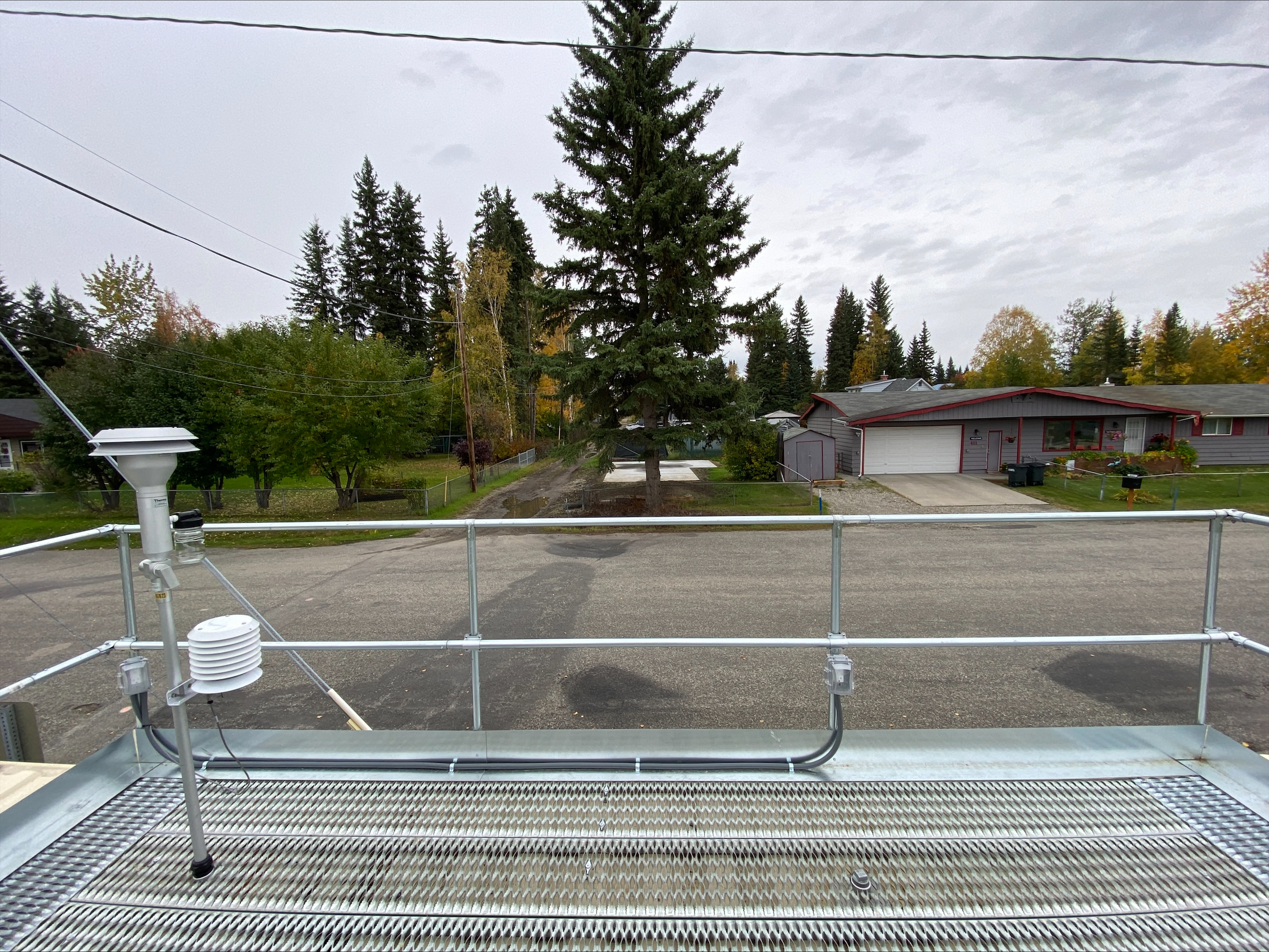A Street Air Quality Monitoring Site
Site Location
Monitoring Siting Criteria for the A Street Air Quality Monitoring Site
Introduction
The Code of Federal Regulation Title 40 Part 58 covers Ambient Air Quality Surveillance. Appendix E to Part 58—Probe and Monitoring Path Siting Criteria for Ambient Air Quality Monitoring contains specific location criteria applicable to State and Local Air Monitoring Stations (SLAMS) ambient air quality monitoring probes and inlets. These siting criteria are necessary to ensure the uniform collection of compatible and comparable air quality data. The probe siting criteria discussed in Appendix E must be followed to the greatest extent possible, although there may be situations where some deviation from the siting criteria may be necessary. Specific siting criteria that are phrased with a "must" are defined as requirements and exceptions must be approved through the waiver provisions. However, siting criteria that are phrased with a “should” are defined as goals to meet for consistency but are not requirements.
The A Street site, located in a field adjacent to Nordale Elementary School in Fairbanks, is a particulate matter (PM) monitoring site. Monitoring objectives for A Street are gathering data on the highest concentrations of PM2.5 pollutants expected in an area and impact of significant sources. A Street is both a State and Local Air Monitoring Stations (SLAMS) site as well as a Special Purpose Monitoring (SPM) site for PM2.5 pollutants. The site consists of one PM2.5 filter-based Thermo Scientific Sequential Partisol 2025i and one continuous PM2.5 Met One Beta Attenuation Monitor (BAM).
Placement and Spacing
The table below has siting criteria as outlined in 40 CFR 58, Appendix E. The criteria were reduced to show only relevant criteria for the site.
Particulate Matter (PM2.5 & PM10)
| Applicable Section | Siting Criteria | Observed |
|---|---|---|
| Horizontal and Vertical Placement | 2-15 meters above ground level for neighborhood or larger spatial scale, 2-7 meters for microscale spatial scale sites and middle spatial scale PM10-PM2.5 sites. 1 meter vertically or horizontally away from any supporting structure, walls, etc., and away from dusty or dirty areas. If located near the side of a building or wall, then locate on the windward side relative to the prevailing wind direction during the season of highest concentration potential.. |
Criteria Met. Primary inlet is 4.8 meters above the ground. Secondary inlet is 4.7 meters above the ground. Inlets are 1.3 meters apart. |
| Spacing from Minor Sources | For neighborhood or larger spatial scales avoid placing the monitor near local, minor sources. The source plume should not be allowed to inappropriately impact the air quality data collected at a site. Particulate matter sites should not be located in an unpaved area unless there is vegetative ground cover year round. |
Criteria Met. Site is near a school and neighborhood. |
| Spacing from Obstructions (a) | To avoid scavenging, the inlet must have unrestricted airflow and be located away from obstacles. The separation distance must be at least twice the height that the obstacle protrudes above the probe inlet. |
Criteria Met. Currently two inlets. |
| Spacing from Obstructions (b) | The inlet must have unrestricted airflow in an arc of at least 180 degrees. This arc must include the predominant wind direction for the season of greatest pollutant concentration potential. For particle sampling, a minimum of 2 meters of separation from walls, parapets, and structures is required for rooftop site placement. |
Criteria Met. 360 degrees of unrestricted airflow. |
| Spacing from Trees | To reduce possible interference the inlet must be at least 10 meters or further from the drip line of trees. |
Criteria Met. Greater than 10 meters from drip line. |
| Spacing from Roadways | Spacing from roadways is dependent on the spatial scale and average daily traffic count. See 40 CFR 58 Appendix E Section 6.3(b) and Figure E-1 for specific requirements. |
Criteria Met. Primary inlet is 4.6 meters from roadside. Secondary inlet is 3.3 meters from roadside. While the site is located less than 10 meters from the edge of the roadway, it is located on a seldom traveled road that is paved and is also covered with snow/ice for up to six months of the year. From the middle of the road, the primary inlet is 10.5 meters away and the secondary inlet is 9.2 meters away. |

